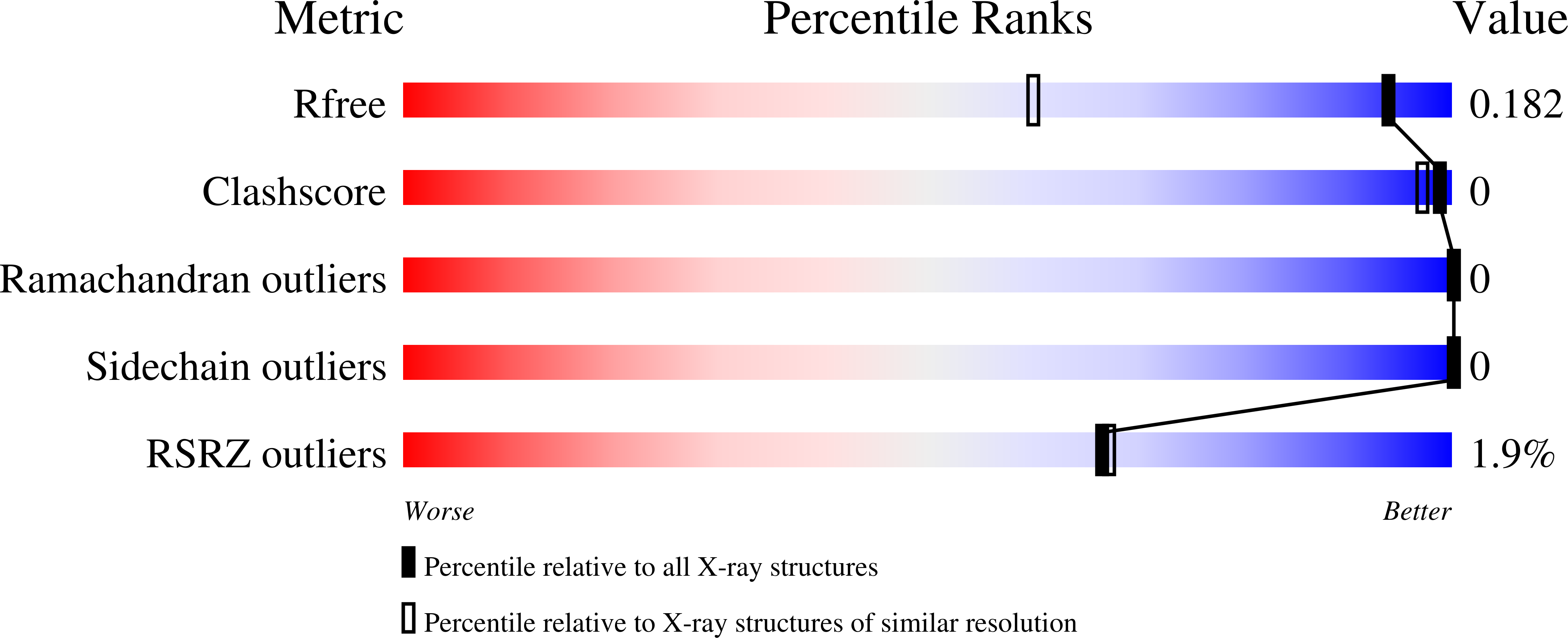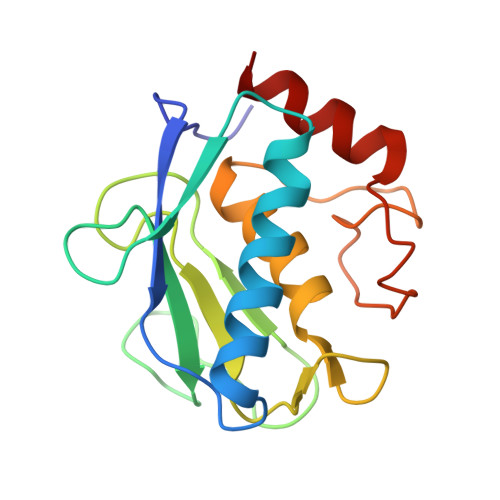Zinc-Metalloproteinase Inhibitors: Evaluation of the Complex Role Played by the Zinc-Binding Group on Potency and Selectivity.
Rouanet-Mehouas, C., Czarny, B., Beau, F., Cassar-Lajeunesse, E., Stura, E.A., Dive, V., Devel, L.(2017) J Med Chem 60: 403-414
- PubMed: 27996256
- DOI: https://doi.org/10.1021/acs.jmedchem.6b01420
- Primary Citation of Related Structures:
5CXA, 5CZM, 5D2B, 5D3C - PubMed Abstract:
The most exploited strategy to develop potent zinc-metalloprotease inhibitors relies on a core zinc chelator and a peptidic or nonpeptidic scaffold that provides supplementary interactions for optimized potency and selectivity. Applied to matrix metalloproteases (MMPs) with highly conserved catalytic domains, this strategy failed to identify inhibitors with the desired selectivity profiles. To question the precise role of the zinc-binding group (ZBG), we have carried out a study on MMP-12 inhibitors with a common peptidic core but different ZBGs. We find that exchanging the ZBG modifies inhibitor positioning and affects its dynamics and selectivity. The binding properties of these compounds were compared through biochemical, structural, and calorimetric studies, showing a complex interplay between cooperative interactions and dynamics dictated by the ZBG. Improving selectivity will require expanding the ZBG repertoire within inhibitor libraries, since relying on a single ZBG significantly decreases our chance to identify effective inhibitors.
Organizational Affiliation:
Service d'Ingénierie Moléculaire des Protéines (SIMOPRO), IBITECS, CEA, Université Paris-Saclay , Gif/Yvette F-91191, France.

















